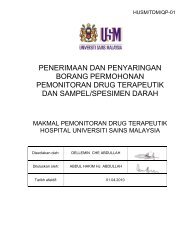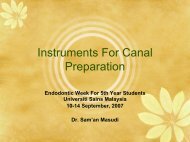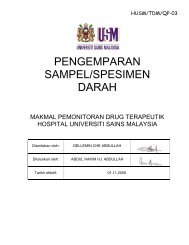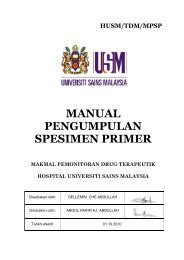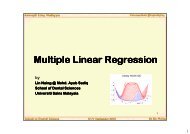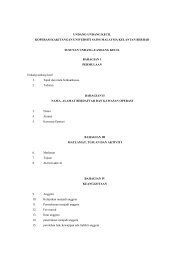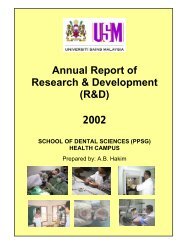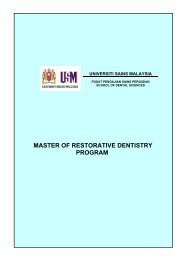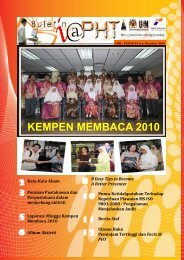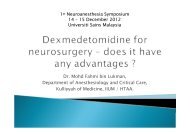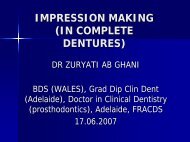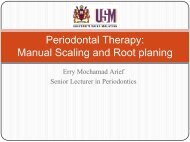Vol 11-R2- Eyelid
Vol 11-R2- Eyelid
Vol 11-R2- Eyelid
You also want an ePaper? Increase the reach of your titles
YUMPU automatically turns print PDFs into web optimized ePapers that Google loves.
SRPS • <strong>Vol</strong>ume <strong>11</strong> • Issue <strong>R2</strong> • 2010<br />
closed primarily. After 1 year of follow-up, all<br />
<strong>11</strong> patients reported marked cosmetic<br />
improvement and high satisfaction after the<br />
reconstructive surgery.<br />
The main concerns regarding the use of dermis<br />
fat grafting are surface keratinization and growth<br />
of hairs leading to ocular surface irritation and<br />
complications. 85 Korn et al. 82 performed mechanical<br />
débridement of the epithelium and found that<br />
step necessary to prevent graft complications.<br />
With that approach, the authors did not note any<br />
postoperative hair growth, surface keratinization, or<br />
any major complications. Furthermore, the authors<br />
noted that meticulous end-to-end approximation<br />
of the dermis side of the graft with the conjunctival<br />
edge allows for uniform migration of the<br />
conjunctival epithelial cells over the dermal graft<br />
surface. Finally, the authors placed the graft deep in<br />
the fornix, where corneal apposition is minimal.<br />
Lee et al. 86 treated 13 patients with sunken<br />
and/or multiply folded upper eyelids using fascia-fat<br />
composite grafts from the mons pubis, temporal,<br />
and preauricular areas. The technique was used<br />
in patients who had undergone Oriental upper<br />
blepharoplasty, which often results in excessive fat<br />
removal and can be associated with injury to the<br />
orbital septum. Adhesions of the skin to underlying<br />
tissues down to the septum can develop. To remedy<br />
such deformities, local tissue transfer can be used<br />
to return a more desirable volume to the eyelids<br />
and can solve the adhesion problem. The authors<br />
argue that dermis fat grafts might be too heavy,<br />
might affect upper eyelid motion, and might also<br />
produce a visible mass. By contrast, the fascia-fat<br />
composite has a rich vascular fascial component;<br />
it is therefore expected to achieve vascularity<br />
earlier and to survive better than free fat alone. In<br />
addition, it is lighter than the dermis-fat composite,<br />
provides a closer anatomic match to the damaged<br />
orbital fat and septum, and is abundant throughout<br />
the body. All 13 patients were satisfied with the<br />
appearance of the final results. Deformities resulting<br />
from volume depletion and adhesion disappeared<br />
immediately after the operation. Six-month results<br />
were maintained throughout the follow-up period<br />
18<br />
(average follow-up duration, 2.5 years after surgery)<br />
without development of any complications.<br />
Yildirim et al. 87 used composite sandwich<br />
grafts containing skin-cartilage-skin for the<br />
reconstruction of full-thickness defects of the eyelid<br />
margin. Composite grafts were removed from the<br />
upper third of the auricular helix. Thirteen patients<br />
were followed monthly for up to 6 months. Graft<br />
loss resulted in three patients who had marginal<br />
necrosis of the outer skin layer of the composite<br />
graft. All of the marginal losses were successfully<br />
treated with daily dressings, without the need for<br />
additional surgery. No corneal irritation or injury<br />
from the use of helical skin for reconstruction of<br />
conjunctiva at the eyelid margin was observed.<br />
The authors stated that an advantage of using<br />
this composite graft technique is that the helical<br />
cartilage is thinner than that of the nasal septum<br />
and is therefore more similar to tarsus. Helical<br />
cartilage also has a better curvature than does septal<br />
cartilage for the globe.<br />
Reconstructive Flaps<br />
A wound or surgical defect that cannot be closed<br />
primarily might require a flap for successful<br />
reconstruction. A flap maintains its own blood<br />
supply from a pedicle or base attachment from<br />
adjacent tissue, so it is useful for reconstructing sites<br />
with poor vascularity that cannot sustain a skin<br />
graft. 22 This feature also leads to less contraction<br />
and a more cosmetically appealing result than those<br />
achieved with grafts.<br />
Upper <strong>Eyelid</strong><br />
Direct Closure<br />
Most upper eyelid defects are caused by the removal<br />
of tumors, trauma, or congenital abnormalities. As<br />
discussed earlier, direct closure of a full-thickness<br />
eyelid defect that is ≤25% of the eyelid length can<br />
be successfully accomplished with a pentagonal<br />
excision approach in a younger patient with less<br />
eyelid laxity. Older patients have increased lid laxity;<br />
thus, defects up to 40% of the length of the eyelid<br />
margin can be closed directly. For direct closure, the<br />
buried vertical mattress technique 15,40 is preferred to



